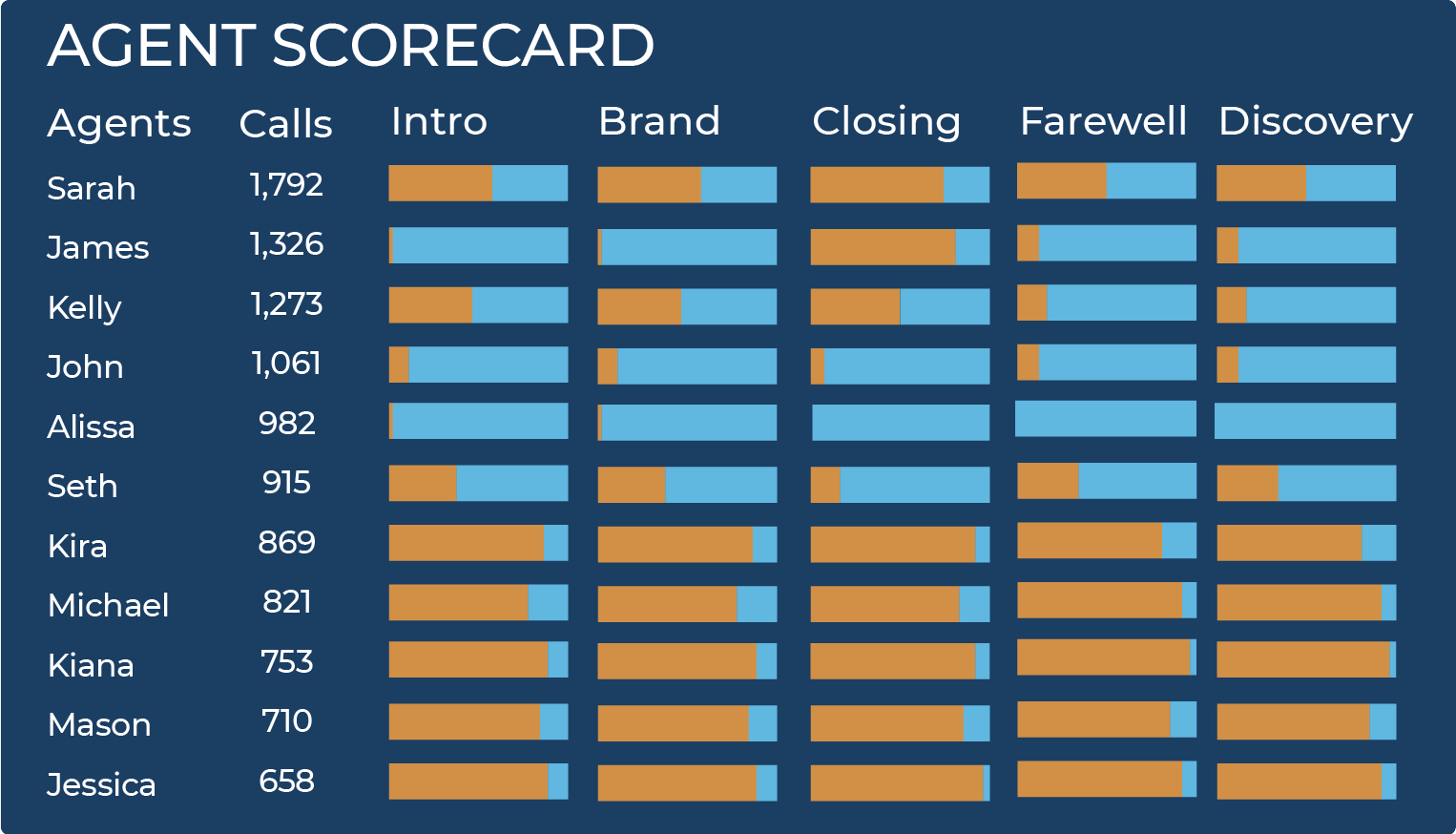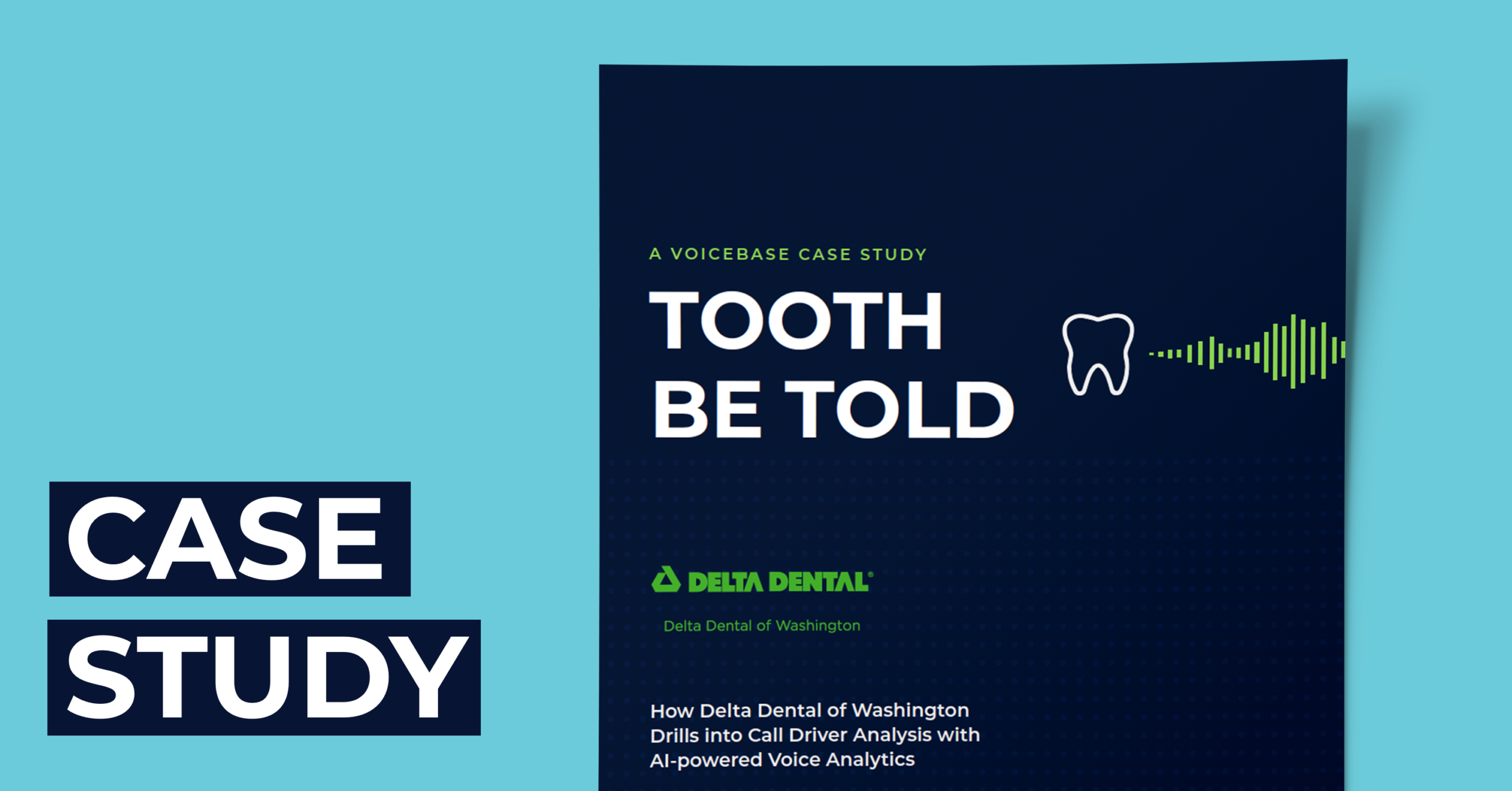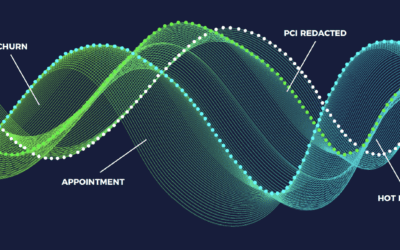TRANSFORMING CALL CENTER ANALYTICS
Call center analytics may be a new topic for most organizations yet to fully undergo digital transformation across the business. The call center offers a unique opportunity for brands to de-silo their call center data and aggregate it with the other business intelligence and operational analytics across the enterprise.
Not too long ago, getting analytics from call center recordings required a manual sort, listen, and transcribe by humans one by one. Cloud-based speech technology, however, has become the go-to technology for call centers to scale and improve operations.
In the past, voice over IP (VOIP) providers overtook conventional telephone market models. Businesses started talking about “the cloud” and what it could mean for their organization. Now, with an ever-changing and increasingly remote working landscape, many call & contact centers are looking to advanced methods like speech and voice analytics technologies to get the full picture of their business operations
Just exactly how are these cloud-based speech analytics services changing call center analytics for the better? Below are just a few dimensions of call centers that will improve as a result of cloud technology.
Access The Voice of The Customer Better Than Surveys
Let’s be honest, when did you last fill out a survey? Often customer feedback survey programs miss the full spectrum of data. With Natural Language Processing (NLP) based technology like speech analytics, organic and rich customer sentiment can be gathered for 100% of calls vs. the few that choose to respond to your post-call survey.
If your organization is working towards digital transformation, customer experience and feedback will be key to starting that journey. Knowing what is best for the customer provides perspective and prioritization of next steps.
Dimensions of VOC data that can be gathered via Speech Analytics:
- Sentiment from calls, chat, and text channels
- Changes in customer emotion from the beginning to the end of a conversation
- Trends in call drivers and customer pain points
- Product feedback, confusion, etc
- Service complaints by location
Score all of your calls
At one point or another, everyone has been on hold on a customer service line and heard the message “This call may be monitored for quality-assurance purposes.” With traditional call center analytics, these conversations would typically be scored manually by a human, which is highly inefficient— only about five percent of calls will be screened. Now, with the implementation of cloud-based speech transcription and analytics, a call center can automate call scoring analysis, ensuring that data is collected from 100 percent of calls.
Drive Agent Performance
Cloud-based speech analytics technology can give agents agency – allowing them to see the direct results of their behaviors based on key data points presented to them in leaderboards and quantified metrics via a dashboard.
“Gamifying” the agent experience can provide easier ways to incentivize and reward agents. It also gives leadership an easy way to see micro and macro performance trends.
Do it faster and cheaper
Computers are 60-times faster at listening to calls and cost 10-times less to operate. Cloud technology allows a call center to collect phone conversation data in instantly, whereas a human has to manually transcribe and analyze phone call data. The time saved screening these calls will save you a heap of money in the long run and greatly increase your ROI.
Deliver consistent results
Not only are humans slower at processing data than computers, we also are inherently flawed in our judgment of situations. When two different people listen back on customer service or sales call, one might deem a response from an agent as appropriate, while the other might think that the agent was coming off as impolite or even rude. The only difference is in the two individuals’ opinions. A computer analyzation of these calls departs from any bias in judgment and will provide you with more consistent results.
Interconnect your data
Under a traditional call center model, information is typically siloed and, as a result, a customer service agent’s knowledge can be extremely limited. A cloud-based solution allows for interdepartmental collaboration and places informational tools at the agents’ disposal, allowing them to more quickly and accurately assess situations and provide solutions. Additionally, cloud services update in real-time, so there is little-to-no downtime in operations, leading to higher customer satisfaction.
Imagine being able to algorithmically serve up helpful content to agents while they are on the phone with customers based on the topic being discussed. Voice Analytics technology can automatically source proper help content from a knowledge base.
Drive Digital Transformation
Many enterprises, driven by the need to adapt and scale, have realized that the data existing in the call center is a goldmine for business insights and ROI. There is so much customer-centric conversational data waiting to be utilized. Delta Dental of Washington, while working on their digital transformation program, implemented cloud-based speech analytics technology in their call center. As a result, they saw lower average handle times (AHT) and improved customer service.
Want to read their case study? Grab your Delta Dental of Washington Case Study here.




